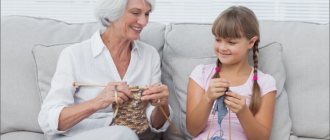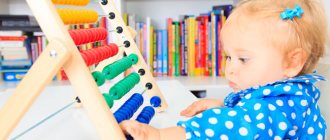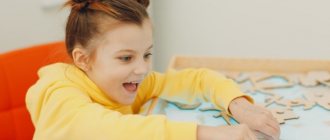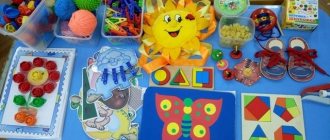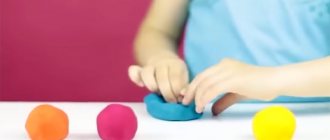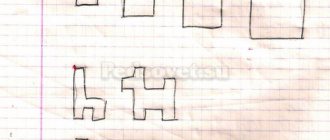Fine motor skills are one of the most important skills for any person. It needs to be developed equally carefully not only for children, but also for adults. Many people neglect the simplest training, not realizing how necessary it is. It is with our hands that we hold cutlery to eat, write, draw, grab desired objects and perform many other actions.
Have you thought about it? Then we suggest mastering the following exercises for fine motor skills in adults. They will help maintain mobility and health at any age.
Training fine motor skills of the hands when restoring a bedridden patient
Gavrilkina Oksana Sergeevna Chief rehabilitation doctor, physical therapy and sports medicine doctor,
More about the doctor
When it comes to fine motor skills , people usually think of infants or preschool-aged children. However, there are several other categories of people who need to perform simple exercises that restore the mobility of the joints of the hand, fingers, and feet. These include:
- children born with cerebral palsy;
- patients who have had a stroke;
- elderly people (over 65 years old);
- bedridden patients, regardless of the disease history.
All joints and muscles of the body, regardless of their size and location, need constant movement. With forced inactivity, muscle tone is quickly lost, finger sensitivity decreases, and joint mobility decreases. This can lead to complete atrophy of the limb.
Ways to develop fine motor skills of the hands.
There are several ways to improve and restore the motor activity of the joints of the hands and fingers. These may include interaction with other people and the use of mechanical devices. For example:
- massage;
- sorting, pouring small objects;
- exercises using rings and balls that are placed on tripods;
- exercises with horizontal bars, rings.
Features of improving fine motor skills of the hands in bedridden patients.
The main problem that people face when caring for patients who cannot get out of bed is the patient’s deterioration in the ability to move, apathy, and deterioration in the quality of speech . All this is due to the weakness of the muscular system due to forced long-term inactivity. This condition is especially dangerous for older people, in whom complete muscle atrophy can occur within a month after the start of bed rest.
The patient’s intelligible speech is also associated with the motor activity of the fingers and hands. Understanding and reproducing words directly depends on motor impulses arising in the upper limbs. With regular training of fine motor skills of the fingers, a significant improvement in the patient’s speech quality can be achieved, which is very important for bedridden patients who have suffered a stroke .
An even bigger problem may be the patient's reluctance to do the exercises. Here tasks in the form of a game with poetry or musical accompaniment will help.
Exercises to develop fine motor skills of the hands
If a bedridden patient is able to independently engage in creative activities such as knitting, embroidery or drawing , these are the best methods for maintaining finger motor skills at the desired level. But often bedridden patients need simpler exercises that can be done independently or under the supervision of a caregiver. Some of them:
- Alternately clenching into a fist and straightening your fingers;
- Rubbing your palms together in a circular motion;
- Consecutive flexion, extension of fingers;
- Rolling a glass or metal ball in the palms;
- Sprinkling fine sand with your hands;
- Separating objects of different shapes and sizes into categories (sorting peas, beans, buckwheat mixed into one pile is good);
- Grabbing moderately heavy objects (books, glasses, water bottles), lifting an object held in the hand 20-30 cm above a horizontal surface;
- Attaching/removing clothespins from rope or wire;
- Rubbing your palms with hand skin cream (especially suitable for women of any age);
- Modeling from plasticine or soft clay.
Mechanical devices for the development of lost fine motor skills of the hands
The medical industry offers many options for devices that help bedridden patients during the rehabilitation period to improve the quality of life. The simplest of them are inserts made of wool or foam rubber, by squeezing them in the hand, the patient reduces muscle spasm and performs an independent massage of the palm and fingers. Pyramids like those for children are also very popular; they not only stimulate the work of the small joints of the hand, but also restore the usually impaired color perception. There are combined devices that include elements of a pyramid, expanders for compression, containers with small balls for sorting and massage.
Needle applicators have also proven themselves to be excellent, affecting sensitive points on the patient’s palm and improving blood circulation in the extremities, which is also important for the normal functioning of the joints and muscles of the hand.
Finger games
“Finger” games are a kind of dramatization of some stories, most often rhyming, using fingers. You can start playing such games even up to one year, and then continue, slightly complicating your finger movements. You can play until the end of primary school age.
Most of these games involve the use of two hands, thanks to which children begin to understand what “down”, “up”, “left”, “right”, etc. are. To obtain the greatest effect, these finger exercises must be structured in such a way that tension, relaxation, clenching and unclenching of the hands alternately change, and isolated movements of all fingers are also involved.
Fun exercises for babies
This is my toy!
An activity option for a child who already knows how to grab and hold objects. When the baby is lying in the crib, put a soft rattle in his hands and gently, weakly pull it towards you. Let the baby try to pull the toy towards him. This exercise allows you to train your biceps, which are responsible for bending your arms at the elbow and turning your hands.
Expedition for children's treasures
Place your baby's favorite toys around the room or playpen and give him freedom of movement: let him try to crawl to his favorite bunnies, blocks and pyramids. This will awaken the child's interest in independent movements.
Multi-colored leaves
The exercise is suitable for babies who are already making their first attempts to stand on their feet, holding onto the sides of the crib. Glue several colored stickers on the wall next to the crib - they should be inaccessible from a sitting position. But it should be easy for the baby to get them by standing on his feet. Your little one will surely enjoy tearing leaves off the wall. Do not leave your child with stickers unattended.
What it is?
What most of us usually call finger dexterity is actually a complex process that involves various systems of the body. Hand motor skills are the ability to make precise and coordinated movements with the fingers. They can be varied, ranging from grabbing objects to creating pictures and juggling. The common denominator is the involvement of the musculoskeletal system, muscles, nervous system and vision in the movement.
If at least one of the systems does not cope with its task, then the desired result cannot be achieved. For example, if nothing is done to develop a child's fine motor skills, he will have difficulty learning to write legibly, will frequently drop objects, and will have difficulty playing sports. In addition, such skills are reflected in the quality of speech. In adulthood, insufficient finger training will cause clumsiness and problems in everyday life, so everyone should know how to develop fine motor skills. The good news is that if you make an effort and be patient, you can learn to control your movements, no matter how old you are.
Ambidexterity
This is the innate or developed ability to use the non-dominant hand in the same way as the dominant one. The bottom line is this... The ease with which you wield your dominant hand roughly reflects the maturity of your psyche and cognitive skills. Do the following exercise: write down any sentence with your dominant hand. Rate how easy it was. Next, write down the same sentence with your non-dominant hand and evaluate how difficult it was. The difference in the ease of writing with your dominant and non-dominant hand is approximately equal to the potential dormant within you. Surely, after this simple exercise, many will be amazed at this huge difference.
Another advantage of ambidexterity... To solve the problems of some epileptics, neurosurgeons have to take countermeasures - they dissect the brain of epileptics. The hemispheres are separated from each other. The patients were then observed for some time, and these observations led to the following discovery. The activity of the dominant hemisphere increases while the non-dominant hemisphere practically ceases its activity. What is the conclusion here? A poorly developed non-dominant hemisphere, due to its underdevelopment, slows down the dominant hemisphere of the brain, preventing it from revealing its full potential. This is very easy to check.
Do the exercise that I described above, but after you write down a sentence with your non-dominant hand, write the same sentence again with your dominant hand and evaluate how much faster, easier and smoother your previous handwriting has become. This happens literally instantly. The effect will be stronger if you write with your non-dominant hand for longer. Developing your non-dominant hand is a very important point in developing your abilities. So practice.
By the way, the world-famous genius Leonardo Da Vinci developed his use of his non-dominant hand to perfection, and I wish you the same

